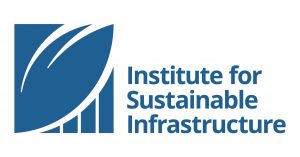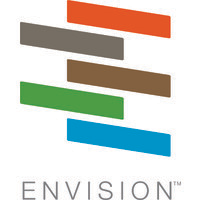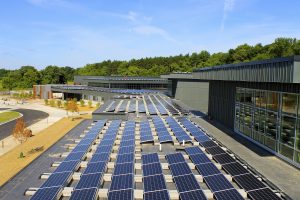You’ve probably heard of LEED certification — the U.S. Green Building Council framework and rating system for green building projects. But did you know that civil engineering projects have their own platform to achieve sustainability award levels?
It’s called Envision.

Envision comes to us from the Institute for Sustainable Infrastructure (ISI), a Washington, D.C.-based collaboration of parties founded in 2010 by some of the most notable professional organizations in the civil engineering industry: the American Public Works Association (APWA), the American Society of Civil Engineer (ASCE) and the American Council of Engineering Companies (ACEC). Similar to LEED, Envision encourages system-wide changes in the planning, design and delivery of sustainable, resilient and equitable infrastructure — but as applied to civil and public works projects.

Here’s how it works. Projects can receive Envision verification if they meet specific sustainability criteria as defined by the Envision framework. Pursuit of verification can happen at two points within a project lifecycle: either near the end of the design phase along with a post-construction secondary review, or only at the post-construction point. The verification process can take anywhere from three months to nearly five, depending on the availability of a credentialed third-party verifier to confirm the satisfactory achievement of points within the project to meet Envision award — and the completion of required documentation. If successful, physical infrastructure projects of any type or size can be awarded Envision verification in one of four categories: Verified, Silver, Gold or Platinum.
Why seek Envision verification?
There are a number of reasons why municipal leaders, developers, public and private companies, academic institutions or project engineers should consider Envision verification.
The obvious benefits to achieving Envision verification pertain to environmental protections and designing more sustainable, resilient projects. In addition, leaders at all levels of government are looking to create good-paying “green” jobs and build green infrastructure to fortify the clean energy sector and offset environmental pollution. Envision provides a new set of industry benchmarks to assess and achieve a higher level of performance, and recognizes projects and professionals that meet the mark. The framework encourages leaders to ask themselves two illuminating and often path-changing questions: “Are we doing the right project?” and “Are we doing the project right?”
Utilizing the Envision certification system can benefit municipalities and project owners in a multitude of ways. It can build long-term viability through increased project resiliency, lower project management and maintenance costs, garner public credibility and stakeholder support, instill confidence in project funders and community tax-payers, provide an objective measure of sustainable performance, and prove quality control and assurance through legitimate third-party review.

What are the steps toward obtaining Envision verification?
The first step toward pursuing Envision verification is to have at least one person on the project team who is credentialed Envision Sustainability Professional (ENV SP). To attain ENV SP certification, the individual must complete the full Envision training course and pass a comprehensive written exam, ultimately proving competency of the Envision framework. The framework includes 64 sustainability and resilience indicators called ‘credits’, organized around five main categories: Quality of Life, Leadership, Resource Allocation, Natural World, and Climate and Resilience. Each credit includes its own statement of intent as well as its own metrics and levels of achievement, along with ways to improve performance, evaluate criteria and document progress.
An ENV SP can objectively assess the Envision principles against any project plan — helping to guide projects toward a higher level of sustainability. The ENV SP credential is recognized globally, meaning that professionals obtaining the certification can apply their knowledge to all types of civil infrastructure projects, in any location. To date, more than 8,000 professionals have earned the ENV SP designation.
How do I get started?
Whether you’re already very familiar with the Envision framework, or just beginning the journey, the earlier it is agreed upon to pursue the award, the easier it will be to build adequate sustainable elements into the project design. Some municipalities, project owners or regulatory agencies may even require Envision verification to reach predetermined planning and development goals, achieve certain types of funding or gain public support. An Envision Sustainability Professional can act as a trusted project advisor and help your project move toward sustainable, resilient outcomes in design and construction of infrastructure.
MSA is proud to have five certified Envision Sustainability Professionals on staff. Ready to get the conversation started? Click here for ENV SP contact information and to learn how these individuals can help clients achieve sustainability goals.